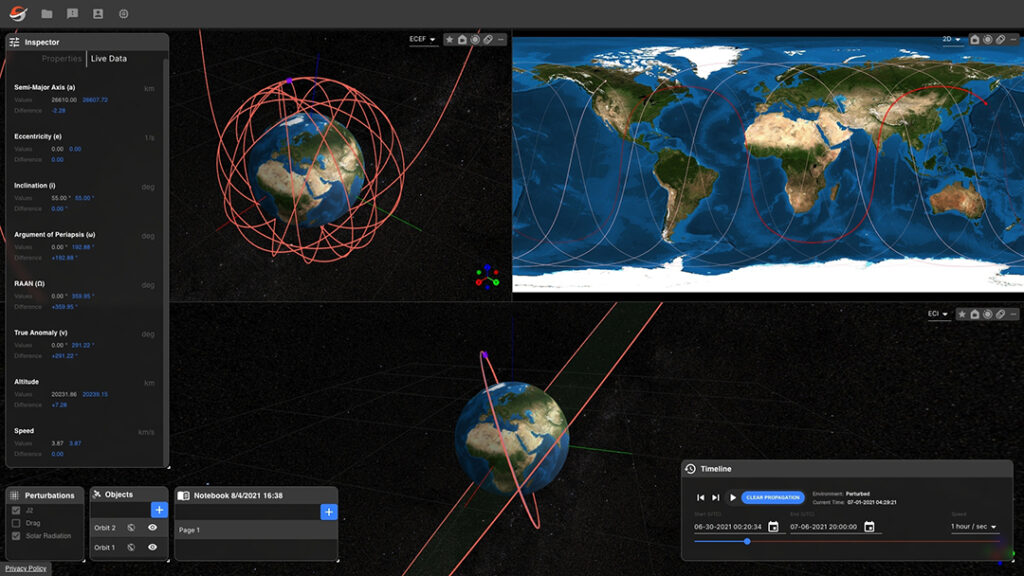THE WATCH STAFF
U.S. Chief of Space Operations Gen. John W. “Jay” Raymond often asserts that Earth’s orbital domain must remain “accessible, stable and secure.”
The U.S. Space Force (USSF) is taking an important step to realize that goal by acquiring technology to provide Raymond’s service with a real-time picture of space. The USSF awarded Slingshot Aerospace a U.S. $25-million, 39-month contract March 31, 2022, for its Digital Space Twin, according to a news release from the contractor.
The contract was funded by Space Systems Command and the USSF’s venture branch, SpaceWERX, according to the news release. It also includes pilot programs that use simulations to help the USSF with training and education.
The innovative Digital Space Twin product, pictured, is described by the technology news website TechCrunch in a March 31 story as a “virtual environment that not only provides a realistic simulation of the physics at play in orbit, but also reflects what’s going on in space … using multiple data sources to map the current location of bodies in orbit (satellites and space junk) and account for space weather.”
That real-time information is crucial because more than 7,000 satellites are in Earth orbit. “Those risks change on a minute-by-minute timeline,” said Melanie Stricklan, CEO of Slingshot Aerospace and a U.S. Air Force veteran, according to a March 31 story by the website Defense One.
Digital Space Twin can be used to simulate missions as well as plan for satellite constellations — which has both government and commercial benefits, according to TechCrunch. Before the new contract, Slingshot Aerospace’s main product was Slingshot Beacon, a satellite collision-avoidance program, TechCrunch said.
“It was important to us since the very beginning to create products that work for both,” Stricklan told TechCrunch. “It will take a collective effort across all commercial, government and civil organizations to ensure that space remains a tenet of our global economy for generations to come, which is why our products have gained traction in both sectors.”
The Digital Space Twin simulations can also improve war games by letting the Space Force’s Guardians “visualize potential nefarious acts that could occur in orbit,” according to the Slingshot Aerospace news release.
“Space war games can help service members think through how they would react to an attack in orbit as well as how to mitigate the disruption if such an attack hurt ground, sea, or air operations — say, if GPS or communications satellites were taken offline,” the Defense One story said.
Such war games are a unique challenge, in part, because satellites in low-Earth orbit can zip by as fast as 16,000 miles per hour, said Tim Coffin, managing director of the space warfighting division at the MITRE Corp. think tank, according to Defense One.
“It’s hard for people to understand and visualize,” Coffin told Defense One, “that a threat to them in space could be something on the other side of the Earth.”
IMAGE CREDIT: SLINGSHOT AEROSPACE

